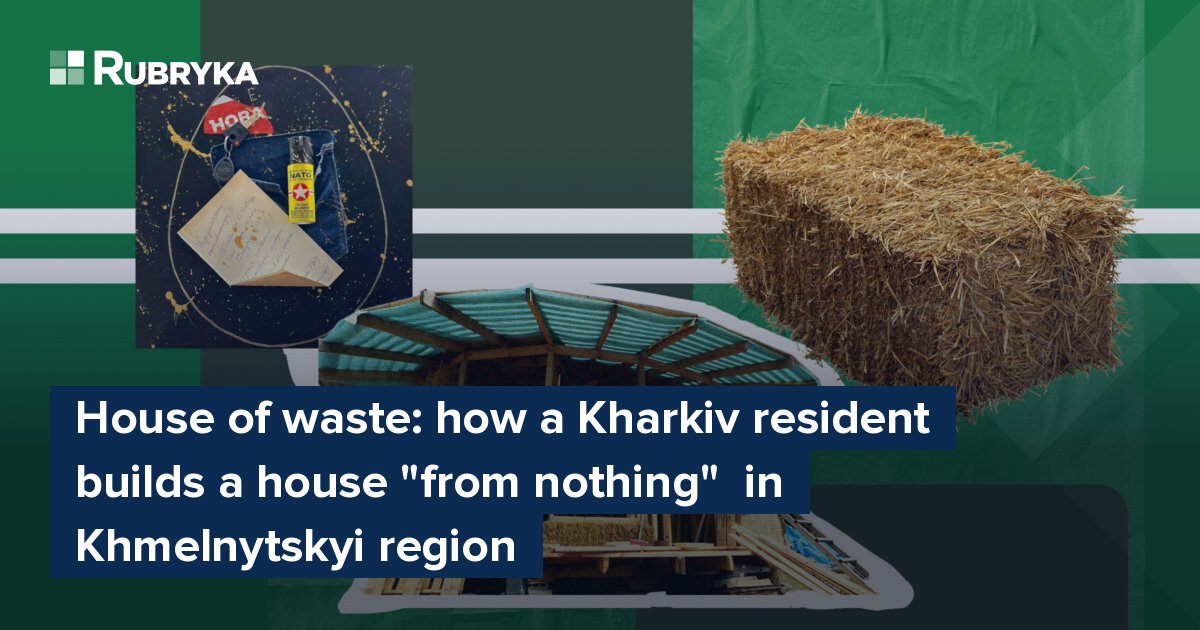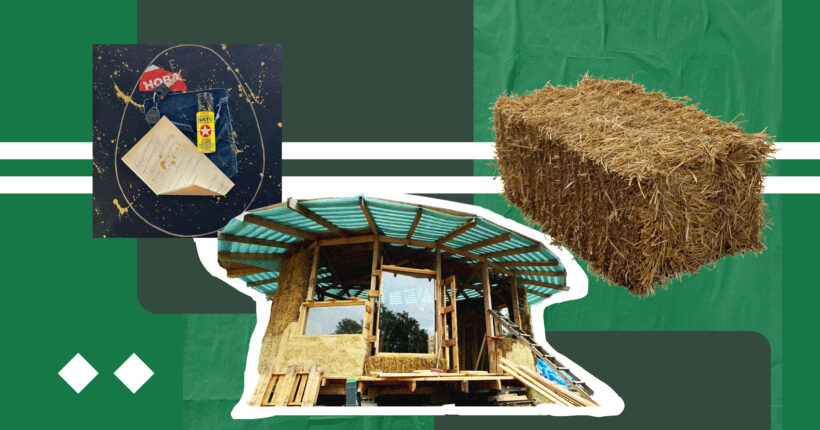
What is the problem?
Since the beginning of the full-scale war, the main problem of IDPs remains housing, which people lost due to Russia's attack on Ukraine. In a new place, resettlers find accommodation with relatives and friends, invest all available resources in renting an apartment, and some can only rely on the help of benefactors or communities that sheltered them. Mostly, people who fled the war with as much as one suitcase can only dream of their own homes.
What is the solution?
Building a house even without significant savings is possible, says designer Lana Teslenko, an IDP from Kharkiv. A year ago, having moved to Khmelnytskyi without housing, income, and moral support, she believed that creating "something out of nothing" was possible. With her husband, an architect by profession, Teslenko decided to build a house from the waste they found at a local dump.
How does it work?
"My ideas have always been based on saving resources and love for the world around us"
Teslenko is originally from Khmelnytskyi but has lived in other cities, including Kharkiv, for 20 years. She is a designer by trade and describes herself as an artistic and creative person. Before the war, Teslenko decorated holidays, weddings, and various fashion events. In 2017, with a friend, she developed a clothing brand, Factura.
"I produced and created many events and projects, invested a lot of my time in saving the funds of many people because my ideas were always based on love for the surrounding world and saving resources — both natural and material," says Teslenko. "I learned to recycle things, use objects for other purposes, generate ideas, and improve the ideas of others."
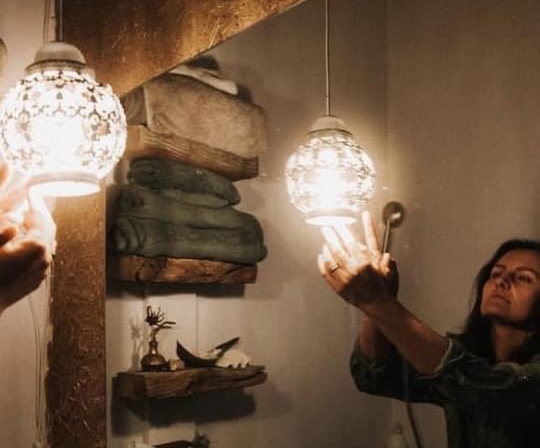
Lana Teslenko in her Kharkiv apartment.
Ideas of conscious recycling found a place in the designer's Kharkiv apartment. It became the first big recycling project of Teslenko and her husband. The neglected room, located in a building built more than a hundred years ago, was turned into a unique space by the couple themselves — almost everything here was created with their own hands and, therefore, had no analogs. According to Teslenko, thanks to recycling, the small house looked very stylish and comfortable, and thanks to the well-thought-out concept, there was enough space for all family members, even for practicing yoga.
"I want to build a house out of waste"
On February 24, the story of the Teslenko family became one of the hundreds of thousands of stories of Ukrainians whose lives were invaded by war early in the morning with explosions. On the very first night of the full-scale Russian invasion, Teslenko, her children, and her husband moved from their cozy apartment to the Kharkiv subway. Then they moved to a country house, but it was dangerous to stay there either — the shelling of the city and its surroundings became more and more intense. They decided to go to Khmelnytskyi, where Teslenko was born and still has relatives. They settled in the suburbs — in the family of a cousin.
"Of course, I left all my work in Kharkiv," says Teslenko. "Something had to be done here, in a new place. We arrived at my cousin's place and noticed a large landfill. I realized it's time to conquer new heights and create new large-scale projects. This is how the project "House from Waste" was born.
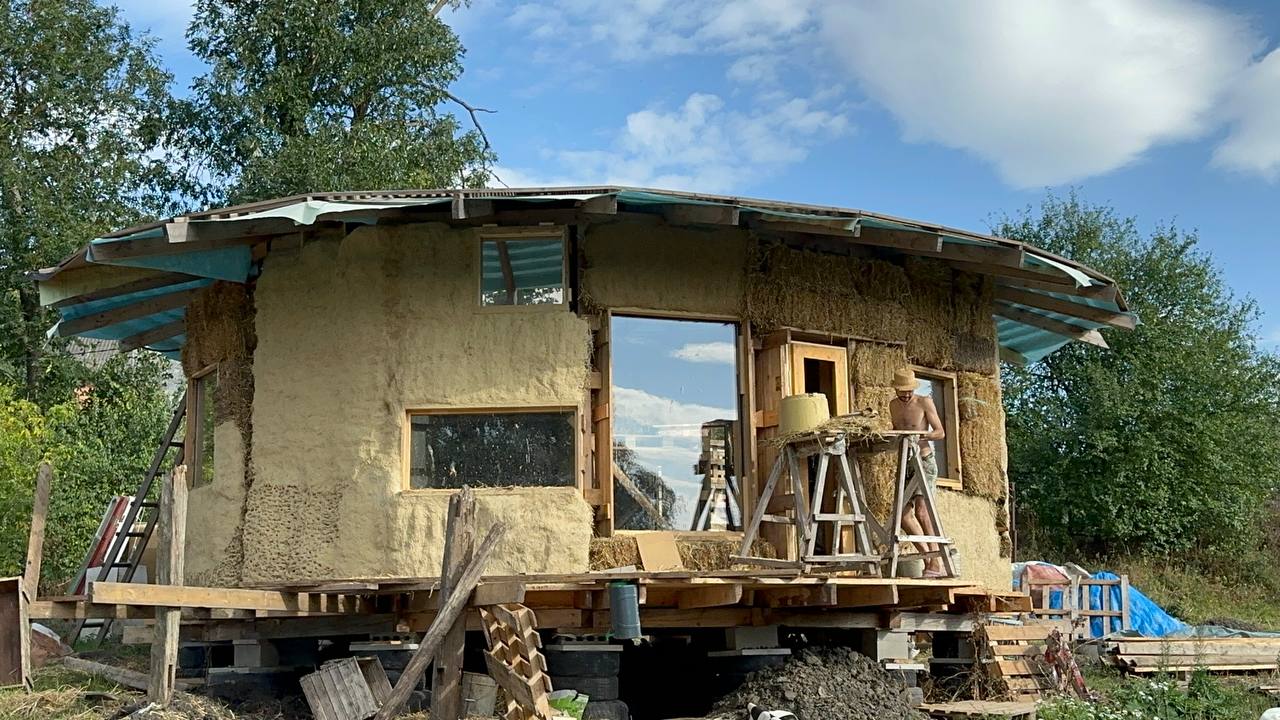
Eighty percent of the materials for Lana Teslenko's house are found in the garbage.
It was not easy to find a plot for the future house — everything that was put up for sale was worth a lot of money. At that time, the couple had no job, money, or income. Flipping through the ads, they saw one offer that differed in price. The plot was much cheaper than the others because it was a vegetable garden and not a building plot. In fact, it was a wasteland surrounded by trees.
"You know, at that time, the idea seemed a little bit far-fetched. But I believe in some higher forces, I trust the world, and I decided that since I had such an idea, it meant I could implement it. I didn't know where we would get the funds to buy the plot or what resources we would find in the garbage. There was only desire and the same accumulated energy that wanted to come out of me and materialize," Teslenko recalls.
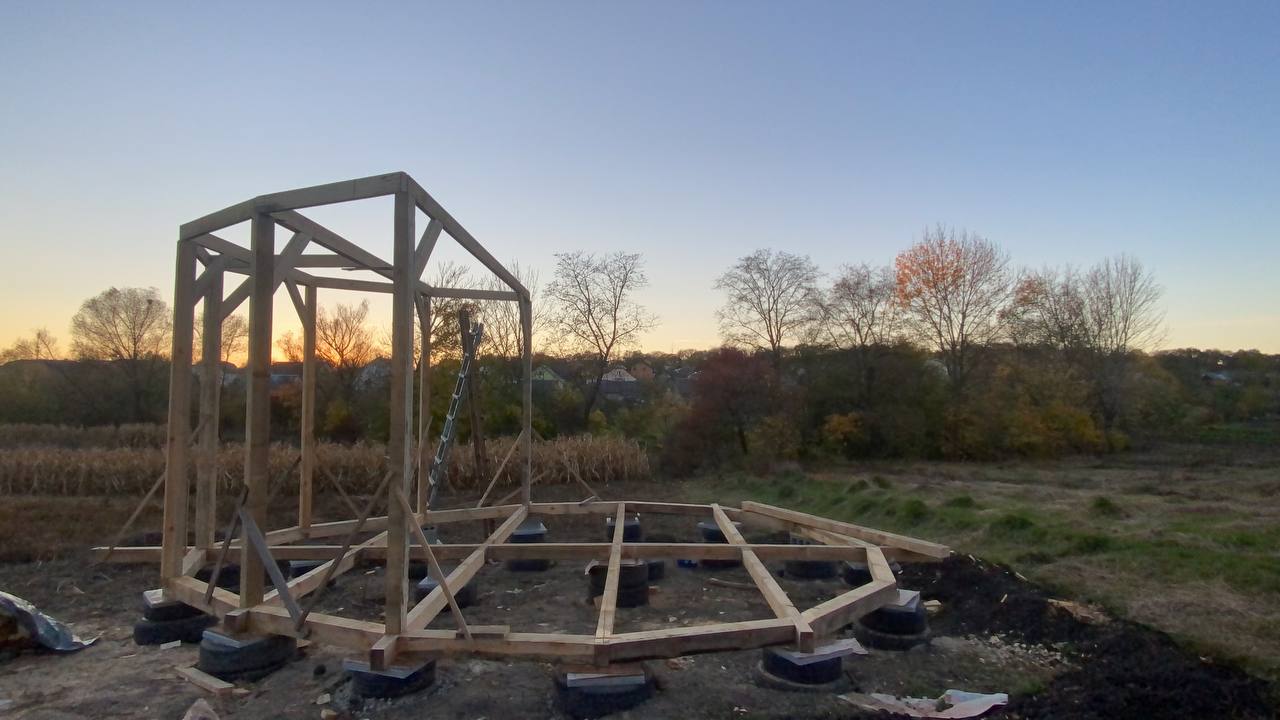
Construction of the frame of the house.
Own funds were not enough even for a cheap plot. The designer turned to her friends on social networks — they helped her get the necessary amount. Thirteen thousand hryvnias collected by the subscribers of the designer's blog became a great support for her and her project.
"People cannot understand how it is possible to buy a plot of land, build a house, without having money — they call it some kind of delusion because they live in some patterns," Teslenko shares. "But in reality, the world is so limitless. There are so many options to create something that the main thing is just to believe. Faith is an essential thing." Her belief that the project could be implemented became the first stone of the new construction.
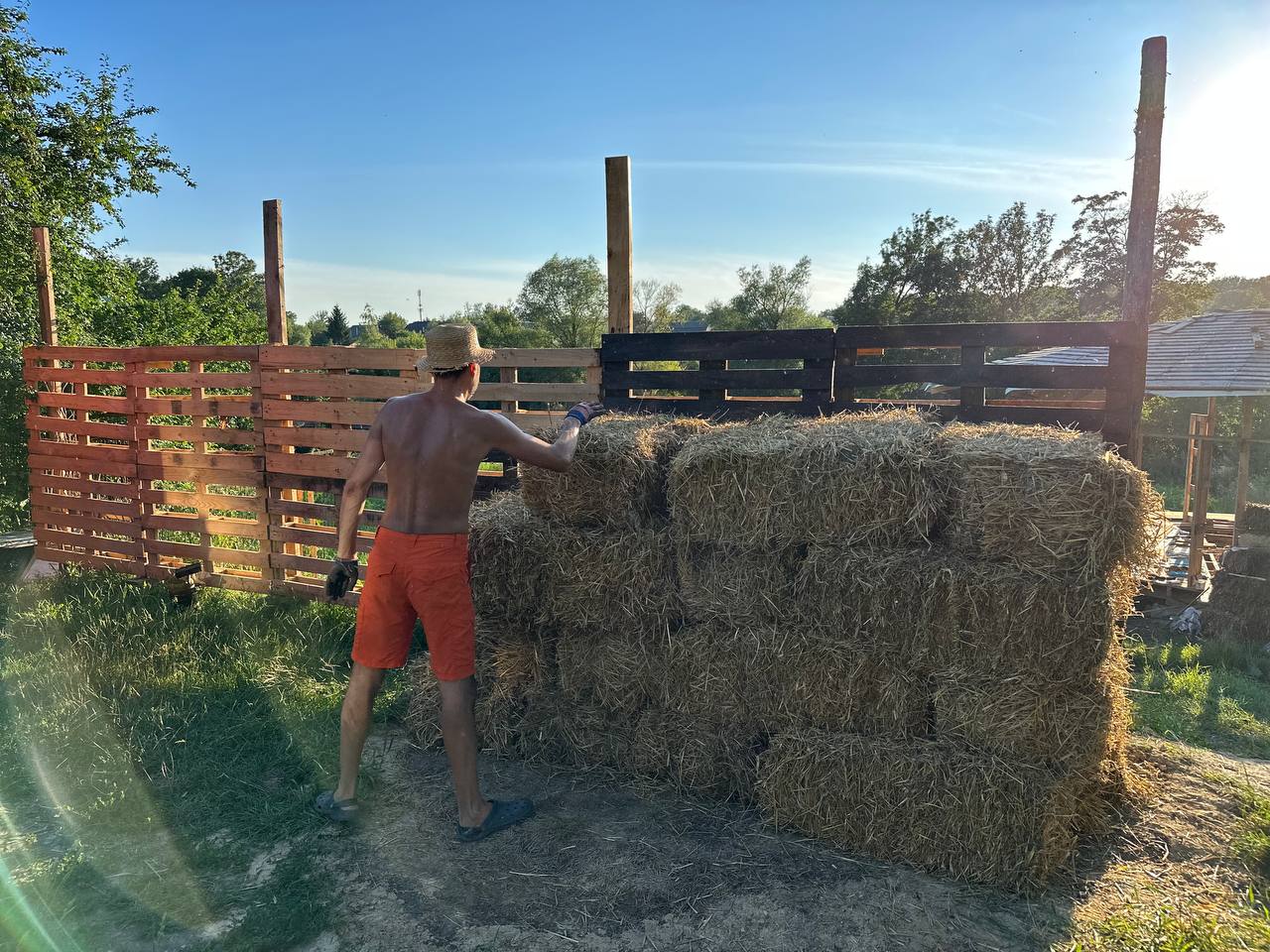
Straw bales for walls.
The experimental resettlement project from Kharkiv is not only about the construction and processing of resources. First, it is about motivation for life and faith in one's own strength.
"I wanted to support people, our Ukrainians, those who were left homeless or left their homes, just like us in Kharkiv. I felt that I have the strength to inspire, to do something useful not only for me but also for society," says Teslenko.
"Most of what we call trash is a precious resource"
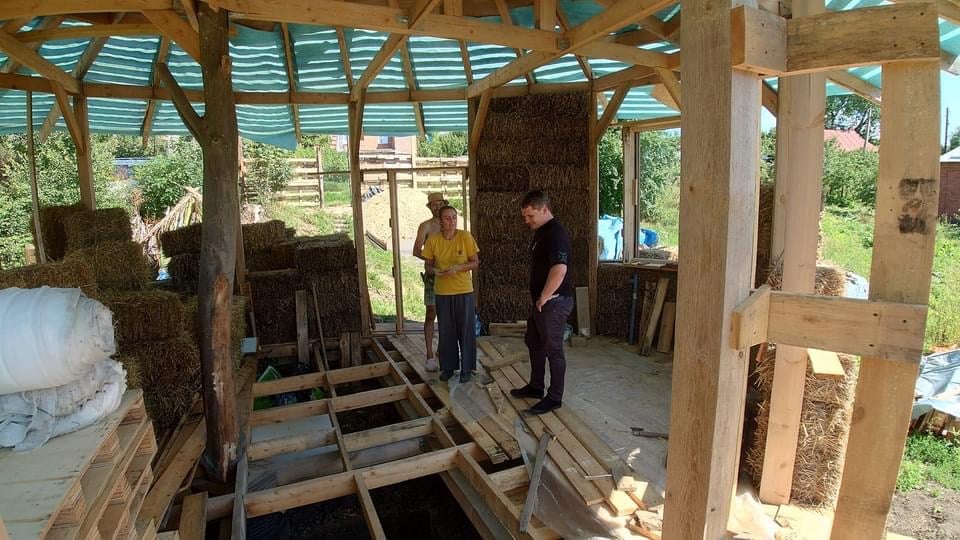
All construction work is done manually.
It took several months to re-register the plot for development. The couple began an active construction phase with the onset of the warm season.
For the future house, the drawings for which were developed by Teslenko's husband, the couple came up with a non-standard solution — the house is designed in the shape of an egg. According to the designer, this shape symbolizes birth and life. The house is of frame type and is installed on a foundation of tires that are densely filled with sand and crushed stone, and the frame itself is made of solid timber. The beam had to be partly bought because you won't always find wood of such quality in the landfill, but 80 percent of the materials are completely recycled. Boards for building and flooring are recycled boxes. The fence is made of used pallets. The walls are made of straw bales plastered with clay, like plastered houses. And doors, double-glazed windows, linoleum, pipes, furniture, and even some household appliances — all from the dump and local sorting center.
Teslenko clarifies that for her, garbage is everything that has crossed the border of the dumpster — even if some luxury furniture or gold bars are brought there. The designer sees her mission as inspiring people and showing that garbage does not exist, that everything around is a valuable resource that can be recycled and used in everyday life, just like new things. Thus, plastic containers become storage drawers, wooden nightstands become stylish washbasin, and a collection of cacti betrayed by someone becomes a green corner in the living room.
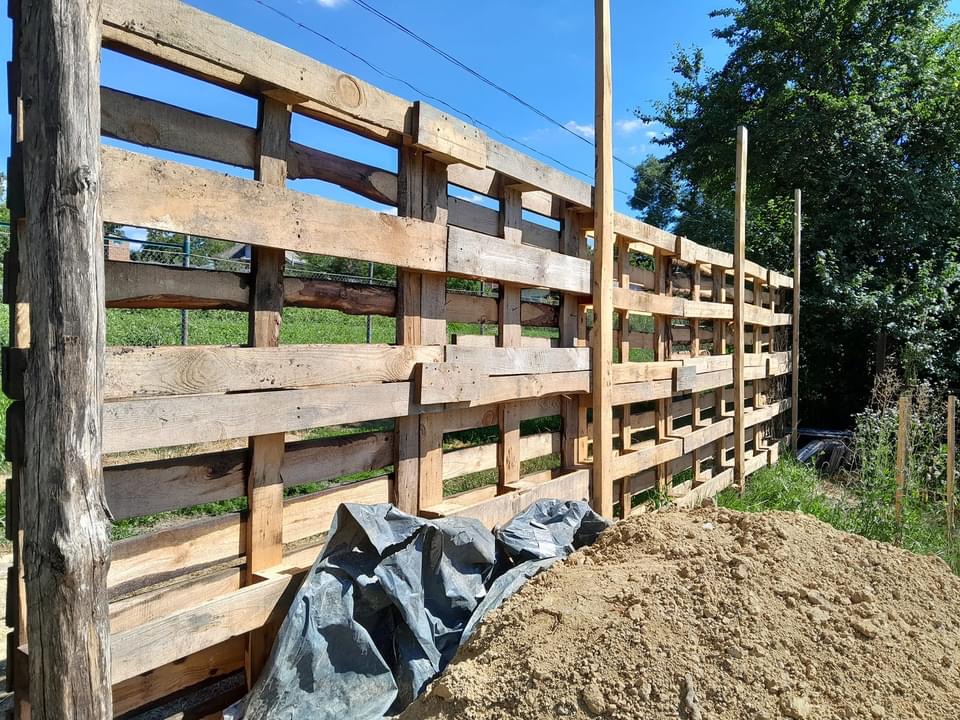
A fence made of pallets.
"There is still minimal sorting in Ukraine," notes Teslenko. "People need to be taught how to sort waste and understand that it is possible to get not only personal benefit from it but also a lot of money for the country as a whole — the way it is done abroad. There are no landfills, garbage is sorted, and everything that can be recycled becomes a resource again."
Teslenko films the construction process and shows it on social networks. She hopes that of the tens of thousands of people who have watched her video, at least some will be inspired and start recycling the resource as well. The reaction to the project #проектдімзісміття♻️ is not always favorable. Still, the designer reacts to such comments completely calmly: "It was not for nothing that I chose a garbage can as my tool — to show that there is no bottom. Trash exists only in the head, and everything around is jewels. I want to show Ukrainians that it is possible to create something useful, stylish, beautiful, and modern from nothing. This is the most important philosophy of the project."
"My whole life is an experiment"
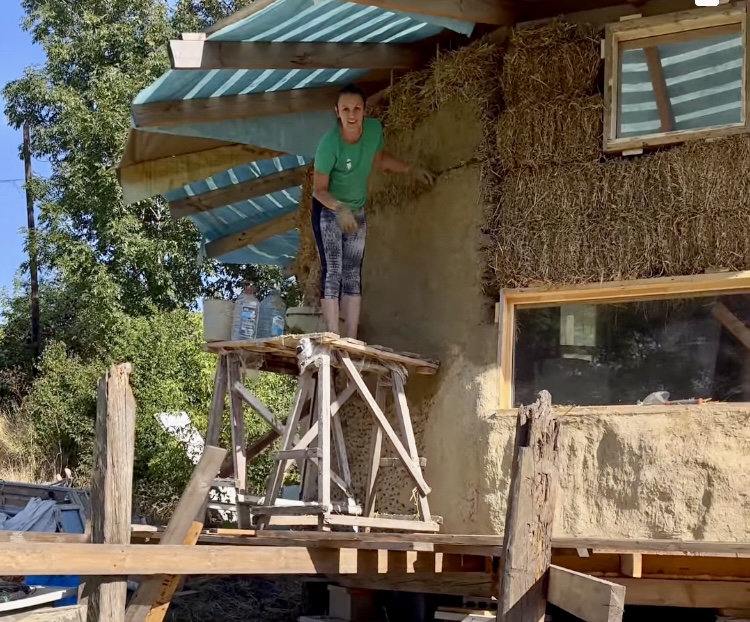
The process of plastering an eco-house.
The construction of the house is still in progress. But, according to Teslenko, she already feels its positive energy and calls the future smart house her retreat center.
"From the beginning, we planned to live there. It will be a small but comfortable space. We have everything thought out to the smallest detail. It's hard to believe, but on only 35 square meters, we have a kitchen-living room, two small rooms for recreation, and a bathroom with a toilet. Maybe we will add half a floor to arrange a bedroom for children or storage space," the Kharkiv designer shares her plans.
The designer is currently finishing up plastering the walls, and then she will start doing interior repairs and furnishing the house. The couple does not want to simply crowd the house with furniture or other items from the dumpster. As creative people, they adhere to style and properly organize space. They say that it is important for them to show a really cool result.
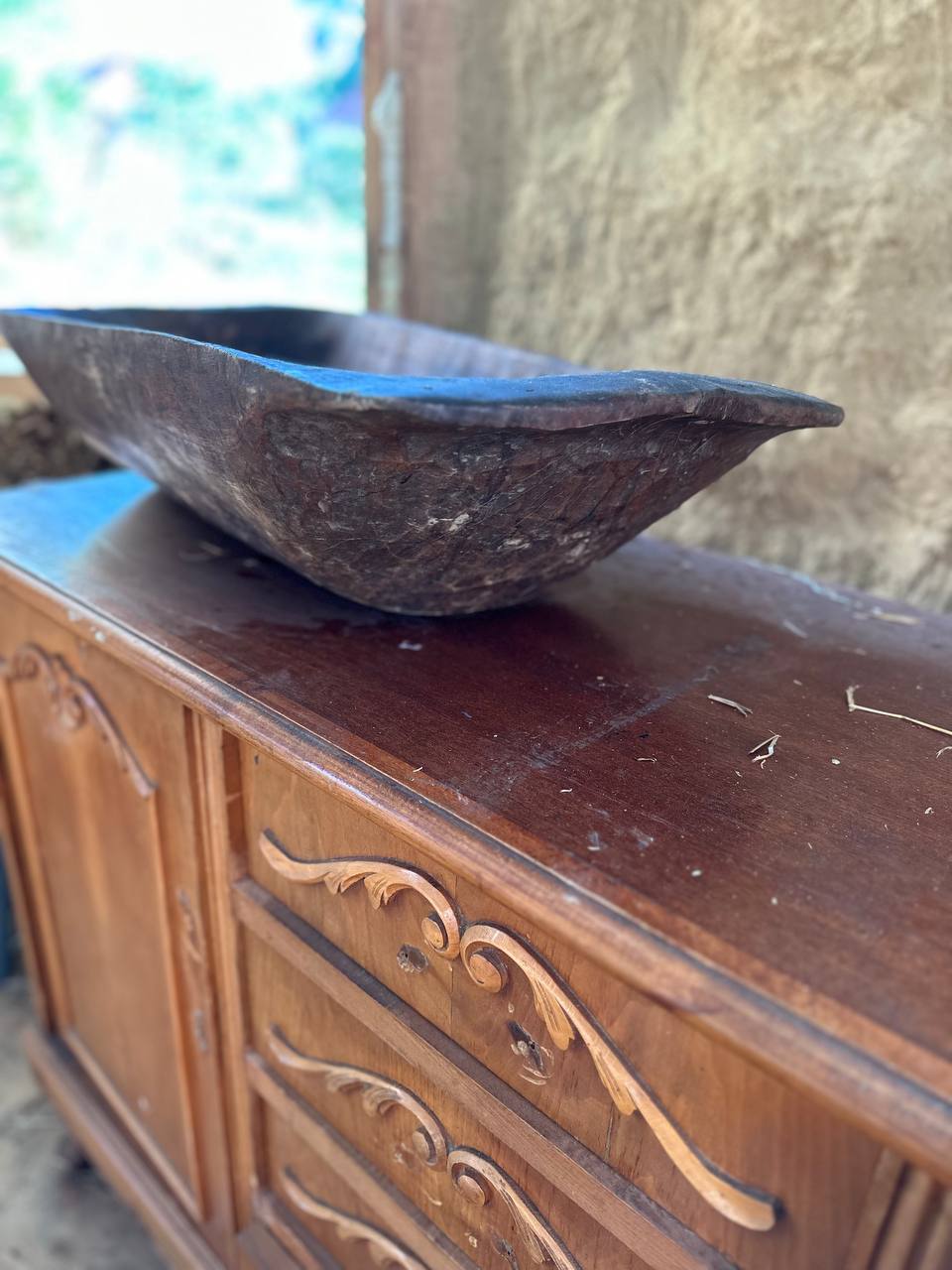
Wooden nightstands, which will become a basin, and below — an Arab chest of drawers, which Teslenko also found in the garbage.
According to the general concept, the house should be as environmentally friendly and autonomous as possible. To provide housing with water, a well was drilled. A furnace will be used for heating, and an ordinary electric stove will be used for cooking. There are plans to install solar panels, and although there are no funds for this project yet, Teslenko believes that by the end of the construction of the house, this issue will cease to be a problem.
"For someone, my words may sound a little wild. But the fact is that, in general, my whole life is an experiment. That's how I feel about it because every step we take is an experiment. We do not know what awaits us tomorrow. And today, many people experience this. Almost yesterday, no one knew they would leave their home and tomorrow would be in another city or country," Teslenko shared her thoughts with Rubryka. "We also don't know what will happen the day after tomorrow. So, I don't take things too seriously but don't confuse that with being frivolous. I just don't give too much importance to the things I do. With an intention, I model different options and try to implement them. After all, if you don't try, you will never succeed."
Even more useful solutions!
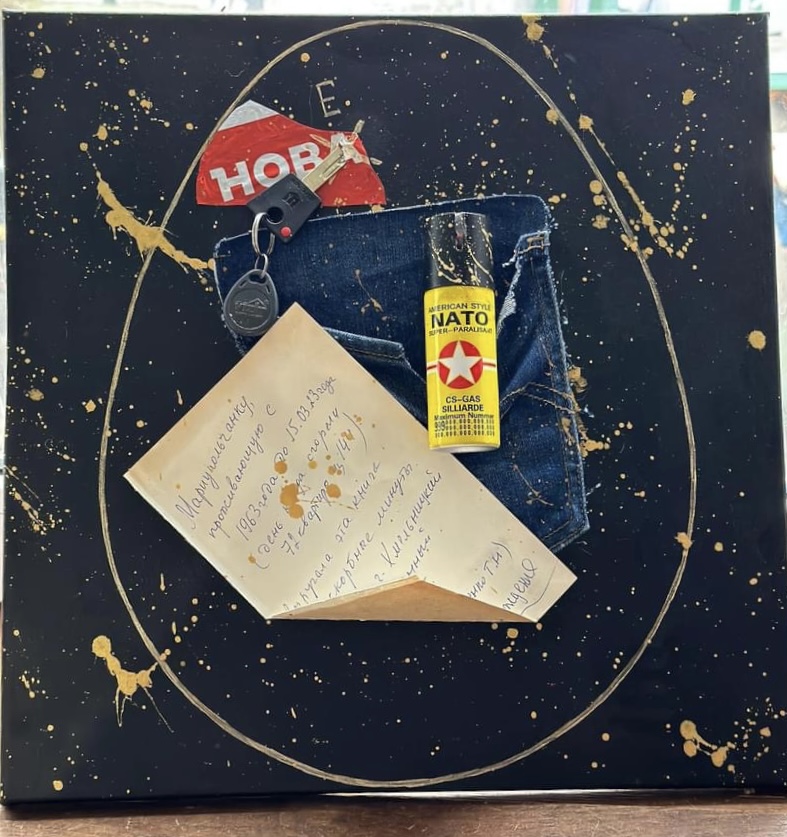
"Mari Upol" is a picture made from the belongings of the people of Mariupol.
Teslenko created the painting called "Mari Upol" from the belongings of the Mariupol people, which remained with them after the start of the full-scale invasion. Everyone sent or gave the designer what they had.
The artist explains:"'Mari Upol' is about scraps from which the people of Mariupol collect themselves, about little things that gave strength to go through the most difficult moments of life, that saved lives — about the remnants of the past, as memories, and their transformation into the art of the new age." The golden egg is a symbol of the value of life. The pocket symbolizes the suitcase in which every resident of Mariupol put their valuables. The gas can, with the symbolic name of NATO, has a history of saving lives and makes one think about how many lives would have been saved if the boundaries did not limit the protection. A flap of polyethylene from a new post office is about the help in the transition to something new. A key from one of Mariupol's apartments will never open its door again, but today, its mission is to open an imaginary door to a new, beautiful future. The touching confession of a woman of respectable age on the book's page calls to think about the value of life.
The painting was recently sold at the auction of the Dorogy Zhyttia charity fund for $210, which was donated to purchase a car for the Ukrainian army.
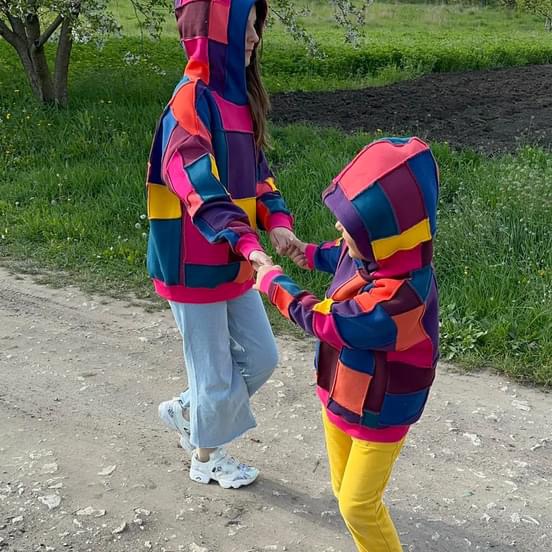
Green Hoodies is another eco-project of Lana Teslenko.
Teslenko also sews amazing bright hoodies, the material for which is scraps from sewing factories, which she also found in the garbage. Green Hoodies captivated Ukrainians because they look unusual and strong, are sewn with high quality, and the scraps, which Teslenko carefully selects, create a pattern that is perfect in terms of color. Last season, the designer created and sold more than 150 hoodies and other clothing items.
The artist tried to contact the factories that take waste to the landfill to collect directly from them, but some refused. As the designer notes, it is probably more pleasant for them to take it to the trash than to simply give it away.
Videos with things sewn from waste also always collect the most diverse reviews and even controversies. However, Teslenko confidently follows her own path and considers feedback with the support of her eco-projects to be her superpower.
"I blog, popularize recycling in Ukraine and beyond. I make hoodies and shirts and tell people that garbage is not scary and that it is more pleasant to wear garbage on your head than in your head," Teslenko is convinced. "Most mistakenly believe that they have nothing to do with environmental pollution. Indeed, what does the consumer have to do if they only consume and do not produce? My research shows that we are all in the same boat. If the consumer uncontrollably overconsumes monthly, buying dozens of new things, this is a direct message to production to provide them with even more goods. Have you ever wondered where the waste from your t-shirts, dresses, or tracksuits goes? And why do you think you have nothing to do with it? By consuming more, people act as a catalyst for more garbage and landfills."
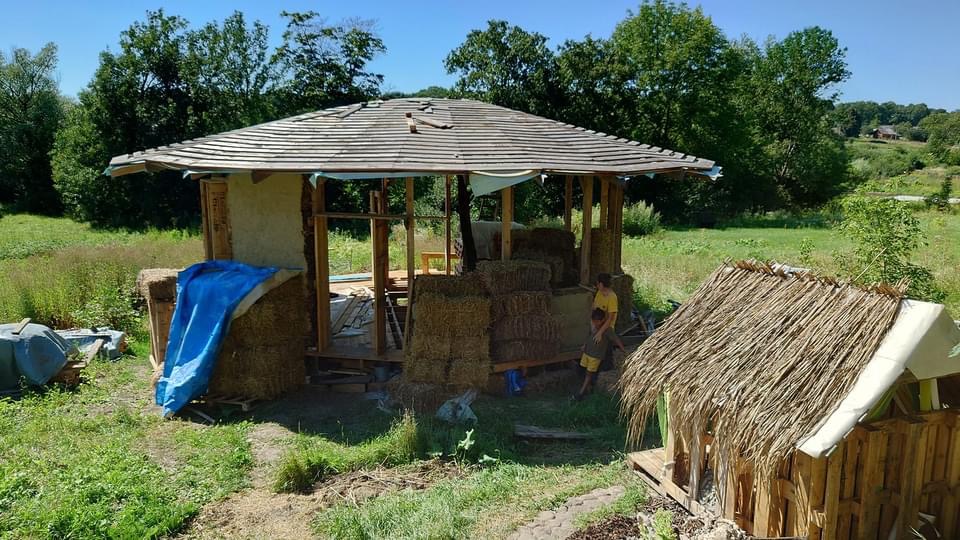
Newsletter
Digest of the most interesting news: just about the main thing



